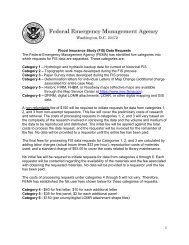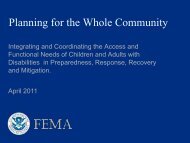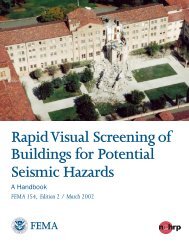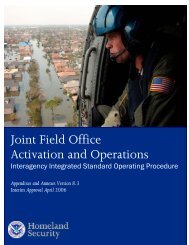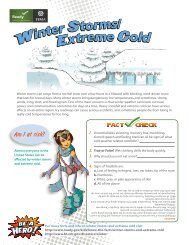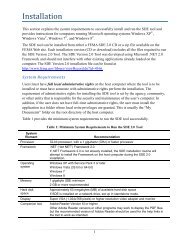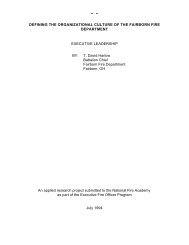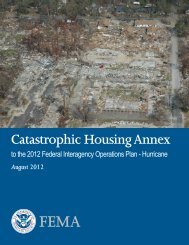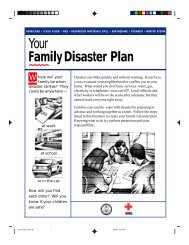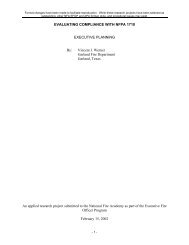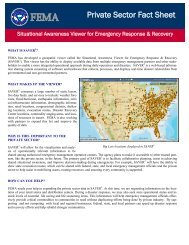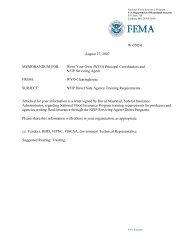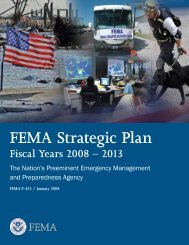Appendix L - Federal Emergency Management Agency
Appendix L - Federal Emergency Management Agency
Appendix L - Federal Emergency Management Agency
Create successful ePaper yourself
Turn your PDF publications into a flip-book with our unique Google optimized e-Paper software.
<strong>Appendix</strong> LL.8.24 Table: S_Profil_Basln [October 2011]The S_Profil_Basln layer is required for all types of riverine hydraulic analyses. Profile baselines arerequired to be shown on FIRM panels for all valid studies with profiles or otherwise established BaseFlood Elevations. At the discretion of the FEMA Project Officer water lines may be shown on vectormaps to represent the bank or stream centerline location. When a profile baseline and water lines areavailable for the same stream reach, only the profile baseline shall be shown on the FIRM in order toeliminate overlaps. A profile baseline is also required when a flood risk project is not being updated, butthe effective profile baseline still accurately represents conditions on the ground.The profile baseline shows the path of flood flows on the FIRM and is an accurate representation of thedistance between cross sections, structures, nodes, or grids in the hydraulic model. If the flood flow pathfollows the main channel of the stream, then the profile baseline and stream centerline will match, butonly the profile baseline should be shown on the FIRM. The profile baseline is used for replicating thestationing and water-surface elevations found in the FIS report profiles, but in GIS format. Thisinformation is used in the following tables within the FIS report: Flooding Sources Included in this FISreport, Principal Flood Problems, Summary of Hydrologic and Hydraulic Analyses, Summary ofTopographic Elevation Data Used in Mapping, the Stream-by_Stream Vertical Datum Conversion, andSummary of Contracted Studies Included in this FIS Report.The spatial entities representing the profile baseline are lines. Profile baselines are to be stored inPolyline ZM feature classes, storing both profile station values (M-values) and 1-percent-annual-chancewater-surface elevations (Z-values) at cross sections, structures, and other modeled inflection points. Fornew models and effective models with valid profile baselines, vertices along the profile baseline are to becalibrated between cross sections and structures using linear referencing / dynamic segmentation tools inGIS. The first vertex of each profile baseline will be the downstream most point on the profile.This table stores Principal Flood Problem and Special Consideration data for use in the FIS text. Due tothe limitations in the Esri Shapefile DBF format, text fields are limited in size. Several fields have beenprovided, but in the event that the description of principal flood problems or special considerationsexceeds the number of characters provided, a tab separated value text file may be submitted instead. Thefirst row of the text file must include a header as follows:WTR_NM FLD_PROB SPEC_CON Each row after the header would have the name of the studied reach/stream followed by a tab, theprincipal flood problem text followed by a tab, and special considerations for that reach, followed by acarriage return.When required, principal flood problem and special consideration files will be named using the followingconvention: _FIS_Fld_Problems_Spec_Considerations.txtGuidelines and Standards forFlood Risk Analysis and Mapping Page L-83 Section L.8 Requirements for FIRM Databases




